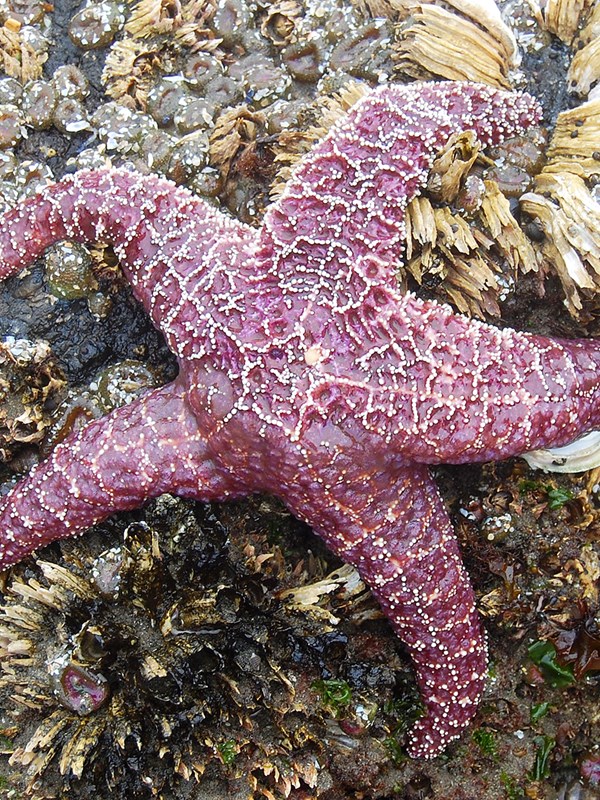
Ochre Star
Scientific Name Pisaster Ochraseus
Native To Northern Pacific Coast (from Alaska to Mexico)
Habitat Intertidal zone to a depth of 100 m (328 ft)
Diet Mussels, limpets, snails, barnacles, echinoids and some decapods (such as lobster and shrimp)
Size and Age Up to 10-25 cm (4-10 in) in diameter; average lifespan of 20 years
Natural History
Ochre stars (also known as common sea stars) are a highly abundant species of sea stars found in the pacific intertidal zone. Their name is derived from the lively purple-to-orange colour of their bodies. Living in wave swept areas, ochre stars have very strong suction feet that cling to rocky surfaces to avoid being washed away.
Ochre stars have a major effect on their ecosystems and have been identified as a keystone species. The presence of ochre stars in intertidal zones allows for rich biodiversity. When ochre stars disappear from their environment, California mussels (one of their primary food sources) explode in number, decreasing biodiversity.
Least Concern

Conservation Status
Many ocean invertebrates require delicate and balanced conditions to survive. For this reason they are known as indicator species—when ocean conditions change, they are the first to be effected. Rising ocean temperatures, and ocean acidification, are currently major factors altering the health of our oceans. Ochre stars are early indicators of these changes.
Interesting Facts
- Ochre sea stars are covered in a webbed array of white spines.
- Ochre sea stars use their tube feet to handle prey. If their prey is too large to be swallowed whole, then it can use its tube feet to open shells. It can then evert its stomach through its mouth and engulf its prey, liquefying it with digestive enzymes.
- Each arm on the ochre sea star has a light sensing organ that is used to navigate its rocky environment and find prey.
- Ochre sea stars are dioecious, meaning there are distinct male and female stars.
- It has a higher tolerance to air exposure than other stars and can survive up to 8 hours in low tides.
